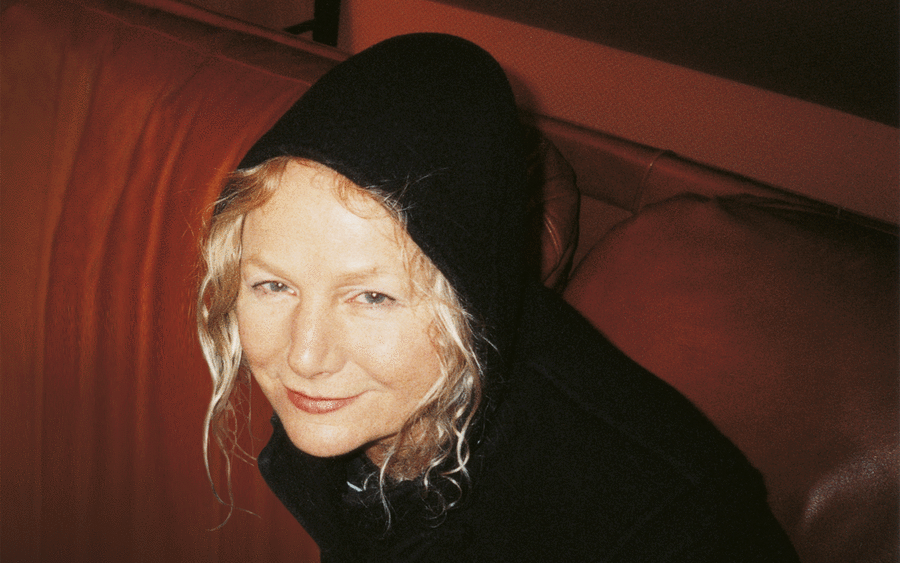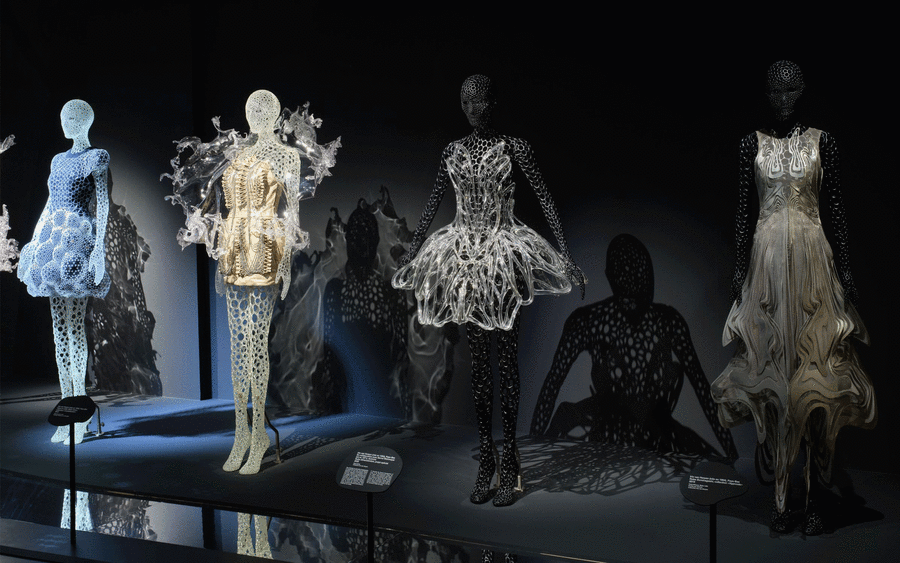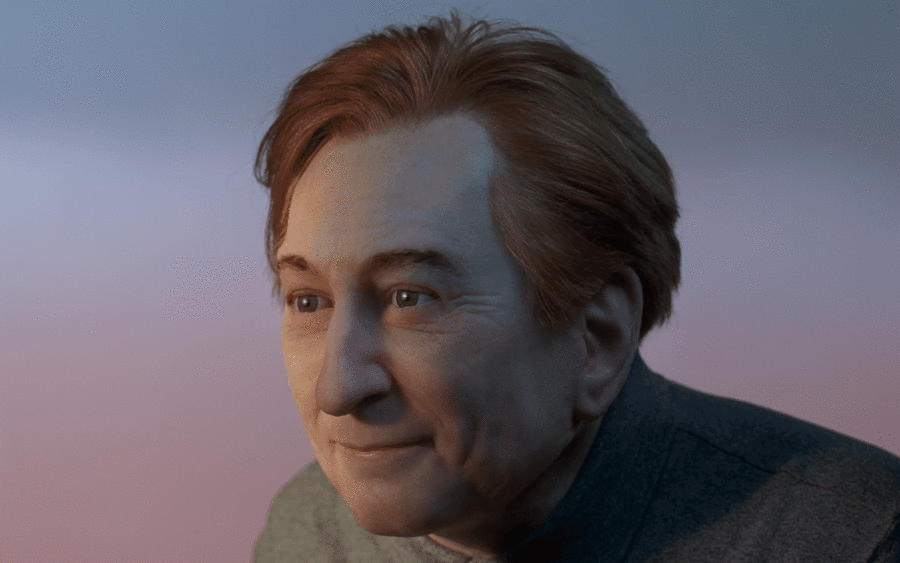Milk (1984)
To get a clear image of something as fleeting as an explosion is no mean feat. Yet Milk (1984) seems to bring together all the ingredients of the perfect photograph. In the bottom right-hand corner, the man sitting on the sidewalk immediately catches our eye: The sun shines on the light-brown brick wall behind him, on his skin and face, and especially his hand holding a carton of milk, its contents spurting out. When Jeff Wall took this photograph in 1984, it was only seven years after his first ‘cinematographic’ pictures. The artist’s talent lies in his ability to capture this suddenness, suggesting that he was in the right place at the right time purely by coincidence. Or as Wall says, to capture ‘a phenomenon so furtive that its shape could not be comprehended without photography.’
Its creation required precise conditions: the powerful, natural light of the sun at its peak, allowing for the necessary speed and resulting sharpness, but also a highly organized architectural backdrop whose horizontal and vertical lines could frame the action and heighten the element of surprise. This frontal, neat staging is reminiscent of one of Wall’s most famous early works, Picture for Women (1979), in which the contours of the mirrors were used to generate a tripartite composition.
The Flooded Grave (1998-2000)
In Wall’s work, human beings often appear in the foreground. However, a few exceptions prompt us to focus instead on the incongruousness of the setting. Such is the case with The Flooded Grave (1998-2000): In the hole in the ground at the center of the frame, we discover a pool as rich as a coral reef, populated by starfish and anemones, instead of a coffin. In the distance, we notice the tombs, yews, ravens, and two cemetery employees – ordinary elements in such a scene that further enhance the unusual character of the sea well.
Photomontage opened up a whole new field of possibilities for Wall in the early 1990s. This work, for instance, is an assemblage of several photographs he took, then edited to blend them together. This technique enables the artist to give shape to the impossible, irrational images that sometimes pop into his head: ‘I pictured this shot as a fleeting hallucination, lasting for a split second only: the most elementary form of life, persevering where we least expect it.’ In other words, in the cradle of death.
After “Invisible Man” by Ralph Ellison, the Prologue (1999-2000)
Many of Wall’s works are tinged with a certain melancholy, embodied by the lonely characters who flee the viewer’s gaze, as if lost in their thoughts, and in these indoor locations in which they adopt passive, idle postures. However, in After “Invisible Man” by Ralph Ellison, the Prologue (1999-2000), the melancholy of the figure sitting with his back turned to the camera is not merely the product of the photographer’s imagination, but rather that of the writer Ralph Ellison and his novel Invisible Man (1952). After rereading the book, Wall wanted to recreate the narrator’s home: a cellar in Harlem lit by hundreds of light bulbs – 1,369 to be precise – so that the man could write his story.
A vision which, despite the dreadful portrayal of social misery, also opens the way for magic and fantasy. Among the dirty dishes, piles of books, and hanging laundry, the anxiety-inducing chaos of the setting appears enchanting beneath the magical light of the myriad bulbs, with their almost comforting atmosphere. As a bibliophile and writer himself, the Canadian photographer was delighted to recreate the scene as he had pictured it while reading the book: ‘The process of creating this room, with its twisted floor, its color palette, and the turbulent flow of the light-bulb pattern was a sculptural endeavor which eventually led to the creation of a highly stimulating pictorial treatment.’
Boxing (2011)
‘The camera always seems more present indoors, to the point of being intrusive,’ Wall explains. From upside-down dining rooms to cozy bedrooms, ordinary and domestic settings play a central role in the photographer’s work, creating an immediate sense of familiarity for the viewer. Staging such scenes, choosing the colors and materials, allows Wall to assert his visual intentions and draw attention to the scene unfolding in front of the viewer. In Boxing (2011) for instance, two bare-chested teenagers spar with gloves in a fancy living room.
Transposed from the ring to this muted atmosphere, the fight scene contrasts all the more with the orderly layout of the pristine white furniture and clean vertical lines that structure the image. Inspired by a childhood memory when he and his brother, Steve, tried not to break the furniture while fighting in their family home, the artist illustrates his concept of ‘near documentary.’ Photographs are recreated from real scenes with such precision that it seems that they are taken on the spot.
Parent Child (2018)
Although Wall’s images are well-thought-out, they regularly incorporate unpredictable, spontaneous elements that blend with the main subject to generate realistic images. Captured in 2018 in Los Angeles, Parent Child (2018) is an eloquent example: A little girl lies in the shade cast by a tree on the sidewalk of a sunny street, while her father stands over her watching her. Pedestrians and drivers go about their business, except for a young boy who turns around, his curiosity piqued by the scene. Although their location in the frame appears studied, the other people photographed are in fact real passers-by, unknowingly involved in the realization of the image, for which the photographer only directed the two main protagonists.
The scene has been fully integrated into everyday life rather than isolated from it, and its author plays on that ambiguity: can we really speak of a fictional image if it has been produced in a real, untouched public space, with clueless extras? Besides, Wall didn’t create the image from his own memories this time, but from a snapshot he had been sent by a photographer friend for him to recreate…And he followed that advice to the letter.
This article is part of an ongoing editorial collaboration with Numéro art. Read the original article here.
Jeff Wall is represented by Gagosian (New York, Basel, London, Geneva, Hong Kong, Paris, Rome).
‘Jeff Wall’
Until April 21, 2024
Fondation Beyeler, Basel
The artist’s quotes are taken from Jeff Wall, the exhibition catalog published in English and German by Hatje Cantz Verlag, including essays by Martin Schwander and Ralph Ubl (2024).
English translation: Emma Naroumbo Armaing for Numéro art.
Caption for the full-bleed image: Jeff Wall, In front of a nightclub (detail), 2006. © Jeff Wall. Courtesy of the artist.


